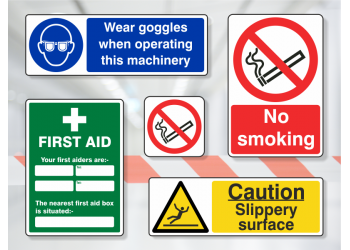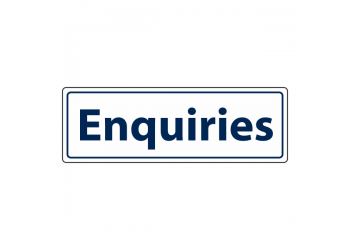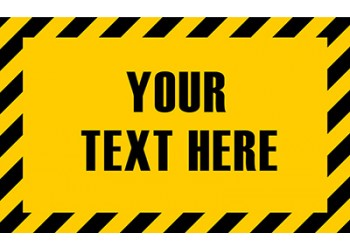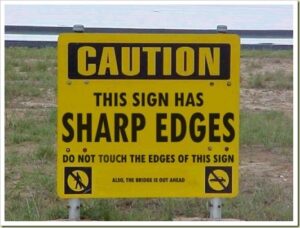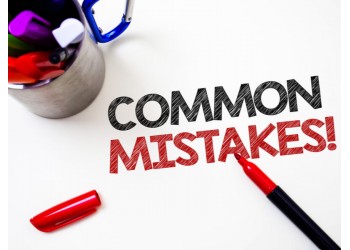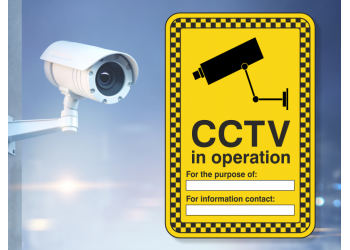Safety signs have their place in all working environments. They are designed to help convey messages of caution, pass along vital information and keep everyone on the premises safe. As such, they are vital. Hanging signs around your workplace is an effective way to better manage employees, visitors and guests. But, did you know that there are many mistakes to make with signs? And, if they are overlooked, they could be causing more problems than they’re helping? In today’s guide, we’ll go through common safety sign mistakes to help you identify and avoid them in your own workplace.
Things to Consider
The safety signs that we use here in the UK all conform to ISO 7010. This means that they are printed with a series of universally recognised logos to ensure they are understandable by all, regardless of language barriers or skill set. While this system is in place to minimise the risk of confusion, it’s important to make sure the messages you’re putting across make sense in a given place. And, that they aren’t contradicting themselves or overcomplicating a process. Using these signs to your advantage and having a clear understanding of the signs available is the best way to organise the best safety setup in your business.
Let’s take a look at some of the most common mistakes seen in working environments today.
Incorrect Placement
One of the biggest mistakes that ill-prepared businesses do is install their signs in the wrong places. Remember that safety signs are there to convey a message about an upcoming hazard or reinforced rule. They need to be placed in the optimal location to ensure they are:
- Seen instantly by all employees, visitors or guests (even if it’s their first time on your premises).
- Legible so that they can be viewed in a range of different lighting situations.
- Unobstructed by both permanent or temporary structures.
- Located close to the hazard to ensure the information/advice is read immediately before the risk.
Consider the following scenario. You hang a ‘Caution Hot Surface Do Not Touch’ sign on the front of the door to the canteen. Your intention is to advise anyone who passes in that numerous surfaces can cause burns or scalds if they come into contact with skin. However, the individuals passing into this space are likely in a rush to meet the demands of your customers or employees. It’s also likely that, in the rush to make sure mealtime runs as smoothly as possible, they are already too far away from the sign when the hazard occurs to remember what the sign says.
A comprehensive risk assessment is the best way to identify where the hazards are situated in your workplace. When you find an area where a risk would be better managed with signs, ensure that they are:
- Installed at eye height and indirect eye-sight of the individual as they approach the caution.
- Kept properly lit, either with additional lights or by using photoluminescent signs.
Not Maintaining Signs
Safety signs are designed to withstand harsh working environments. But, just like all the other equipment on your premise, they need to be properly maintained. The images and colours used to convey messages are printed in bright, highly visible colours. And, to keep these legible for all visitors, you need to ensure dirt and grime is removed efficiently. This is particularly important in certain environments – such as kitchens where dirt and grease are inevitable. Here at Lasting Impressions, we offer our signs in both self-adhesive vinyl or 1mm rigid PVC. Both of these can be wiped clean with a damp cloth and won’t degrade easily over time.
You’ll also want to make sure that older signs are replaced when they start to look worn. It’s easier for new employees or visitors to overlook an unkept sign, believing that it relates to a past instruction and not one that is still relevant today. And, ensure that all fixings are secure to keep the information directly in the eye-sight of the reader. Your safety signs are an investment into the health and safety of your employees and should be treated with the highest importance.
Too Many Signs Placed Together
We’ve mentioned the need for a risk assessment in order to identify the risks in a working environment. But it pays to remember that there will always be risks. Even in the best-regulated environment, hazards will still arise – some of which you won’t be able to predict or reduce. Performing an assessment of your work environment should flag up the most pressing hazards and those that post the biggest risk to safety. It’s important, when picking signs, that you use them to convey the most important messages.
If you place too many signs close together, the messages will become overwhelming. Passers-by will likely ignore them because of an inability to understand exactly what they should or should not be doing. Equally, it will become difficult for readers to understand which signs are focused on them and which are irrelevant. Too many signs, while it may seem like a fully protective measure, is more likely to make a lot of things fall through the woodworks.
Improper Signs
When selecting the right style of signs for your hazard, it’s important that you choose one that conveys the entire message. In some scenarios, a simple logo and line of text will be enough to warn people of a hazard, like with the Main Switch Sign. However, other situations may need more explanation, such as the ‘Danger. Men Working On Electrical Circuits’ sign. During the risk assessment, decide how complex of a message it is that you need to convey. Ask guests and employees for their input to make sure you choose the right styles for that specific environment.
Here at Lasting Impressions, we specialise in the design and supply of custom safety signs to suit your businesses needs. If you have any quhttp://estions or would like to speak to a member of our team, please do get in contact here today.

